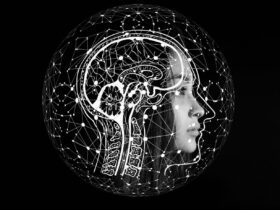In an increasingly digital world, the concept of AI avatars is gaining traction, transforming how we interact with technology and each other. AI avatars are digital representations that use artificial intelligence to mimic human behavior and characteristics. This blog explores the evolution, applications, and future potential of AI avatars, emphasizing their significance in various industries.
The Evolution of AI Avatars
The journey of AI avatars began in the mid-1990s with the introduction of basic virtual assistants. Initially, these simple chatbots laid the groundwork for the more sophisticated AI avatars we see today. As advancements in artificial intelligence (AI) and machine learning (ML) progressed, so did the capabilities of these digital representations.
The introduction of Generative Adversarial Networks (GANs) has played a significant role in enhancing avatar realism. GANs enable machines to create highly realistic images and videos by pitting two neural networks against each other: one generating images and the other evaluating them. This technology allows for lifelike avatars that can mimic human expressions and gestures.
Types of AI Avatars
There are primarily two types of AI avatars:
- AI-Generated Avatars: These avatars are created by feeding algorithms with images or descriptions of a person. They can represent anyone and are commonly used in social media and gaming.
- Talking Avatars: These are more advanced versions that can communicate verbally. They are often used in customer service roles, online education, and digital marketing to provide a more engaging user experience.
Applications of AI Avatars
AI avatars have found applications across various sectors, enhancing user engagement and operational efficiency.
1. Customer Service
Businesses are increasingly leveraging AI avatars to improve customer service. These avatars can handle inquiries 24/7, providing immediate responses to customer questions. For instance, banks use AI avatars to guide customers through financial processes, answer queries about services, and offer educational content. By simulating real human interactions, these avatars build trust and enhance customer satisfaction.
2. Education
In the education sector, AI avatars serve as virtual tutors, helping students learn in an interactive way. They can explain complex topics, provide personalized learning experiences, and even conduct assessments. The use of AI avatars in e-learning platforms has made education more accessible, allowing students to learn at their own pace.
3. Marketing
In marketing, AI avatars are revolutionizing how brands connect with consumers. They can be used in promotional videos, product demonstrations, and social media campaigns. By creating engaging content featuring relatable avatars, businesses can capture audience attention and increase brand loyalty.
4. Healthcare
AI avatars are making significant strides in healthcare as well. They can assist with patient education, symptom triage, and even rehabilitation support. For example, healthcare providers use virtual avatars to guide patients through post-surgical exercises or educate them about medication management.
The Role of AI Avatars in the Metaverse
The metaverse—a collective virtual shared space—has become a hot topic in recent years. In this digital landscape, AI avatars play a crucial role as they represent users and facilitate interactions within virtual environments. Whether attending meetings or socializing with others, these avatars enhance user experiences by providing lifelike representations in immersive settings.
Mixed Reality and Virtual Reality
AI avatars also integrate seamlessly into mixed reality (MR) and virtual reality (VR) environments. In MR, they can help users interact with digital objects overlaid on the real world. In VR, avatars create immersive experiences that allow users to explore virtual worlds while engaging with others through their digital selves.
Creating Your Own AI Avatar

Creating a personalized AI avatar is easier than ever with the availability of various online tools. Here’s a simple guide to help you get started:
- Define Your Purpose: Determine what role your avatar will play—will it be for personal use, business applications, or entertainment?
- Choose an Avatar Creation Tool: Several platforms like Synthesia, Colossyan, and Fotor offer user-friendly interfaces to generate avatars.
- Customize Appearance: Personalize your avatar by selecting facial features, clothing, and accessories to match your identity or brand.
- Implement Voice Features: If you want your avatar to communicate verbally, consider tools that offer voice synthesis capabilities.
- Integrate Into Your Platform: Once created, you can integrate your avatar into websites, apps, or social media platforms to enhance user engagement.
Future Trends in AI Avatars
The future of AI avatars is promising and filled with possibilities:
- Hyper-Realistic Avatars: As technology advances further, we can expect even more realistic avatars that closely resemble real people in both appearance and behavior.
- Emotionally Intelligent Avatars: Future avatars may be equipped with emotional intelligence capabilities to understand user emotions and respond appropriately.
- Integration with IoT Devices: With the rise of the Internet of Things (IoT), AI avatars could interact with various smart devices, providing seamless assistance across different platforms.
- Personalized Experiences: As data analytics improves, avatars will become even more personalized, tailoring interactions based on individual preferences and behaviors.
- Ethical Considerations: As AI avatars become more prevalent, discussions surrounding ethics, privacy, and regulation will be crucial to ensure responsible usage.
Conclusion
AI avatars are not just a trend; they represent the future of digital interaction across various sectors. By enhancing user experiences in customer service, education, marketing, and healthcare, these digital representations are proving to be invaluable assets in our increasingly digital world. As technology continues to evolve, the potential for AI avatars will only expand, paving the way for innovative applications that we have yet to imagine.
Embracing this technology today can lead to significant advantages for businesses and individuals alike as we navigate the exciting landscape of digital interaction. Whether you’re looking to create a personal avatar or implement one for your business needs, now is the time to explore the possibilities that AI avatars offer!





























